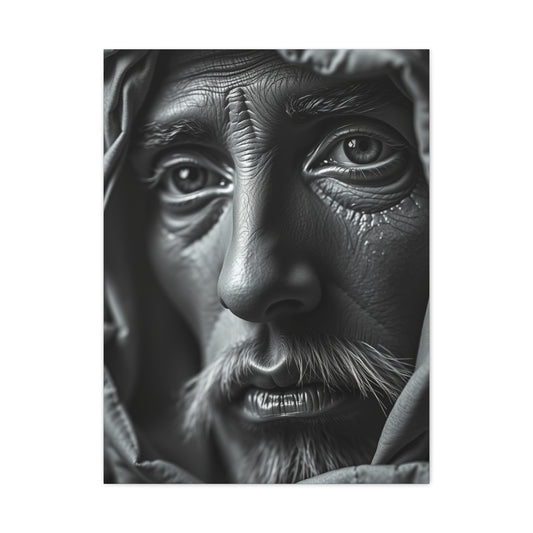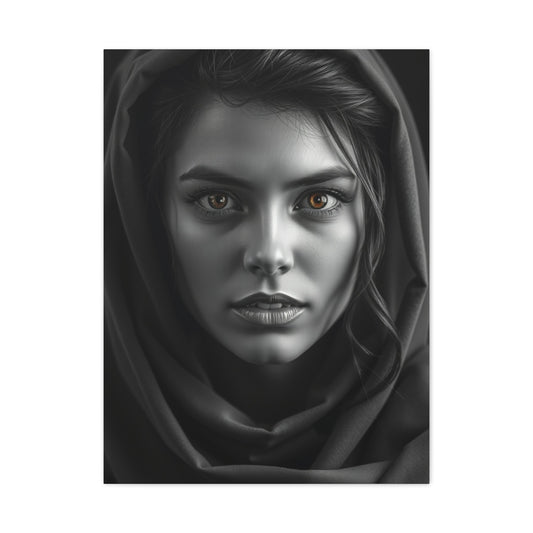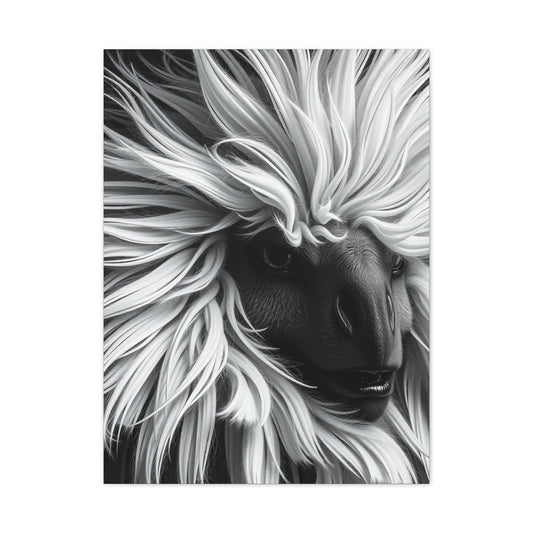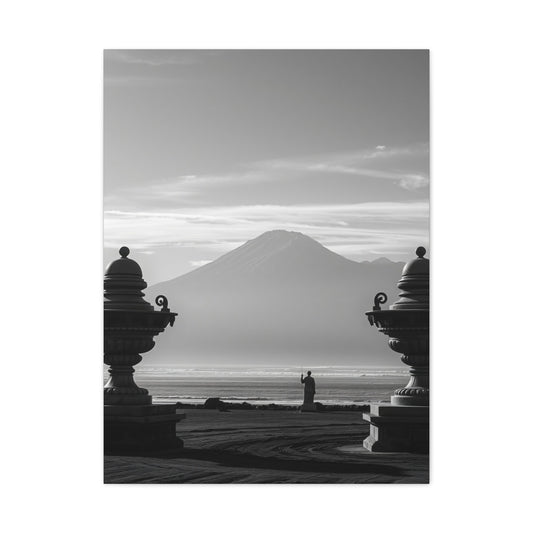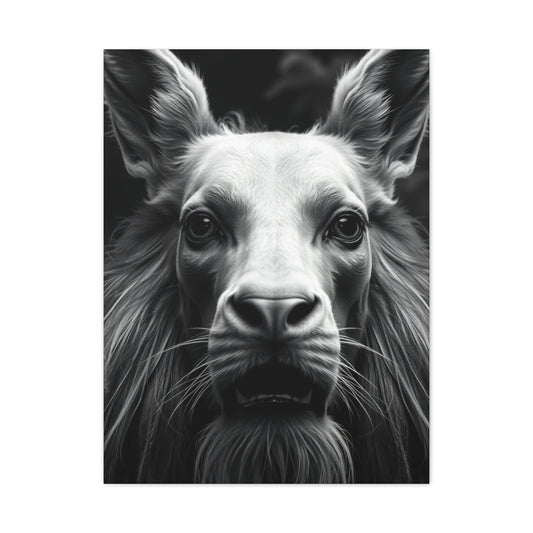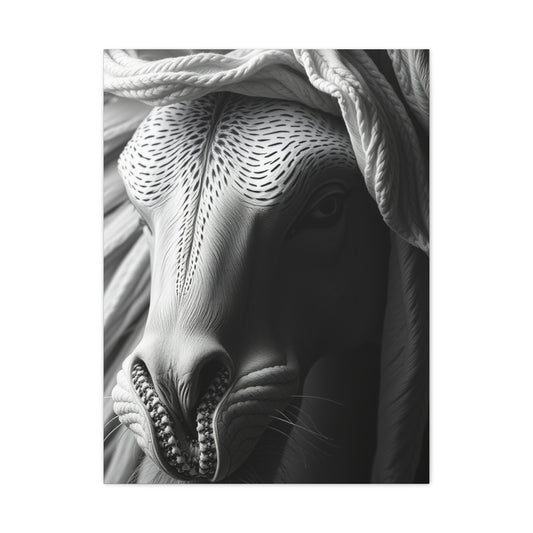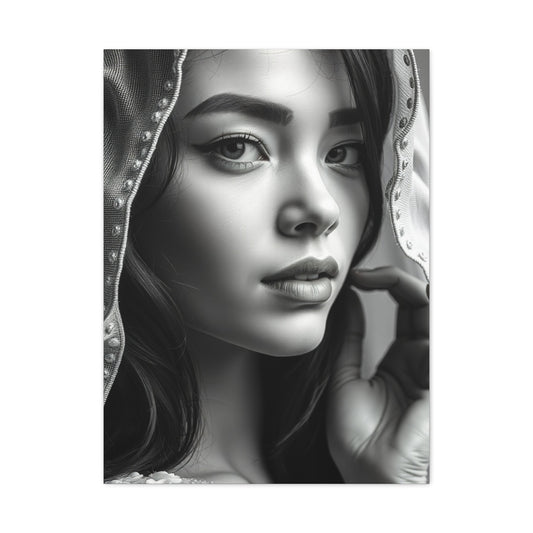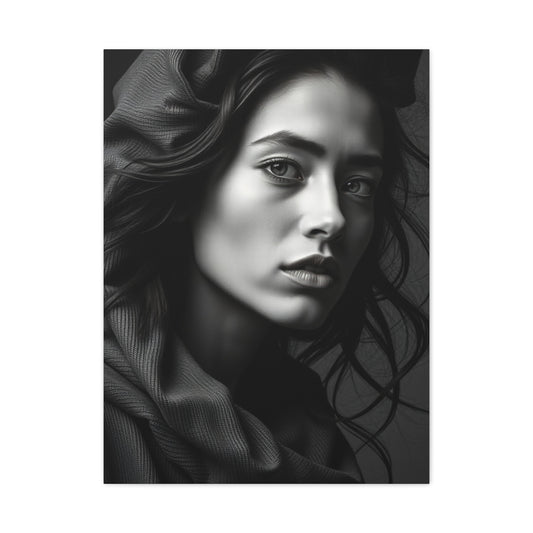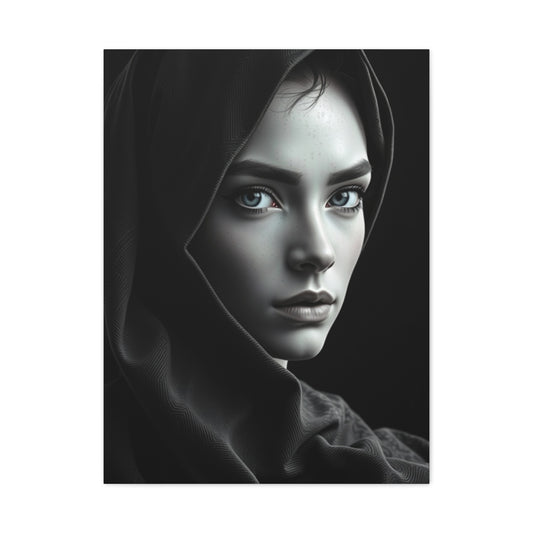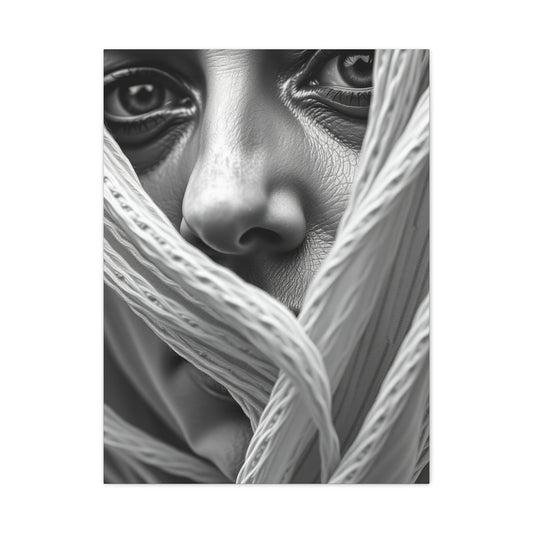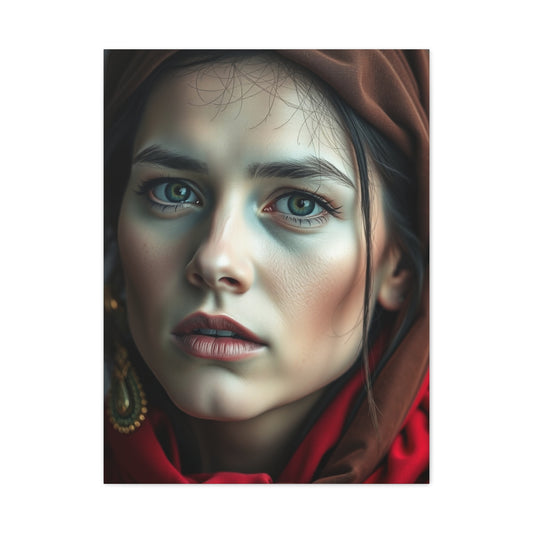Sophisticated Monochromatic Interior Design: Complete Guide to Black and White Wall Decor
The timeless allure of monochromatic design continues to captivate interior decorators and homeowners alike, establishing itself as one of the most enduring and versatile aesthetic choices in contemporary home styling. This classic color combination transcends fleeting design trends, offering a foundation that remains perpetually elegant and sophisticated. The inherent contrast between these opposing hues creates visual drama while maintaining an understated refinement that works seamlessly across various architectural styles and personal preferences.
Monochromatic wall decoration represents more than merely hanging artwork in neutral tones; it embodies a design philosophy that emphasizes balance, contrast, and timeless appeal. This approach allows homeowners to create spaces that feel both modern and classic, bold yet serene, making it an ideal starting point for those embarking on their interior design journey or seeking to refresh existing spaces with confidence.
The beauty of this color scheme lies in its inherent versatility and foolproof nature. Unlike more complex color palettes that require careful coordination and extensive planning, monochromatic designs offer natural harmony while providing ample opportunity for creative expression through texture, pattern, and scale variations.
Historical Significance and Contemporary Relevance of Monochromatic Design
Throughout design history, the combination of these contrasting hues has played pivotal roles in various artistic movements and architectural styles. From the stark minimalism of Scandinavian design to the bold statements of Art Deco interiors, this color pairing has consistently demonstrated its ability to adapt and evolve while maintaining its fundamental appeal.
Contemporary interior design continues to embrace this classic combination, with modern interpretations incorporating innovative materials, textures, and artistic techniques that breathe new life into traditional monochromatic schemes. Today's designers recognize that this timeless pairing provides an excellent foundation for experimenting with various design elements without overwhelming the space or creating visual chaos.
The psychological impact of these contrasting colors cannot be understated. This combination creates a sense of balance and calm while simultaneously providing the visual interest necessary to prevent spaces from feeling sterile or bland. The stark contrast naturally draws the eye, creating focal points and adding depth to interior spaces without relying on complex color relationships or overwhelming patterns.
Understanding Color Psychology in Monochromatic Spaces
The psychological effects of monochromatic design extend far beyond simple aesthetic preferences. These contrasting tones work together to create environments that promote focus, clarity, and mental organization. The absence of competing colors allows the mind to rest while still providing sufficient visual stimulation to maintain interest and engagement.
Research in environmental psychology suggests that monochromatic spaces can reduce visual stress and promote feelings of sophistication and refinement. This makes such color schemes particularly valuable in spaces designed for relaxation, concentration, or professional activities. The clean, uncluttered visual field created by these tones can enhance productivity and create a sense of order that many find psychologically comforting.
Furthermore, the neutrality of this color combination makes it an excellent backdrop for showcasing other design elements, artwork, or architectural features. Rather than competing for attention, the monochromatic foundation allows other elements to shine while maintaining overall design cohesion.
Essential Color Coordination Principles for Monochromatic Schemes
Creating successful monochromatic interiors requires understanding the subtle variations and undertones within seemingly simple color choices. True mastery of this aesthetic involves recognizing how different shades, tints, and tones interact to create depth and visual interest without breaking the fundamental color harmony.
Contemporary design trends favor incorporating various shades of gray, charcoal, and off-white variations to add sophistication and prevent the stark contrast from becoming overwhelming. These intermediate tones serve as bridges between the extremes, creating more nuanced and livable spaces that feel warm and inviting rather than clinical or harsh.
Professional designers often recommend introducing warm or cool undertones consistently throughout a space to create subtle color temperature harmony. For instance, choosing cooler grays with blue undertones throughout a room creates cohesion, while mixing warm and cool undertones can create unwanted visual tension that disrupts the serene quality monochromatic schemes are known for.
The strategic use of different finishes and textures becomes particularly important in monochromatic spaces, as these elements provide visual variety that would typically be achieved through color variation. Matte and glossy surfaces, rough and smooth textures, and varying levels of opacity all contribute to creating rich, layered environments within the constraints of a limited color palette.
Advanced Wall Treatment Strategies for Monochromatic Spaces
Moving beyond simple paint applications, sophisticated monochromatic wall treatments incorporate various techniques and materials to create depth and visual interest. Textured wallpapers, decorative plasters, and architectural moldings all contribute to creating rich, layered environments that avoid the potential monotony of flat, single-color surfaces.
Consider incorporating dramatic accent walls using deeper charcoal or near-black tones to create focal points and add architectural interest to spaces lacking distinctive features. These darker applications work particularly well behind beds in bedrooms, dining areas, or as backdrop walls for entertainment centers, creating intimate, cozy atmospheres within larger spaces.
The current trend toward embracing darker interior colors extends beyond accent walls to complete room transformations. Deep charcoal walls paired with crisp white trim create sophisticated, cocoon-like environments that feel both dramatic and surprisingly cozy. This approach works particularly well in rooms with abundant natural light, where the dark walls create striking contrast without making spaces feel oppressive or cramped.
Textural wall treatments become especially important in monochromatic schemes, where visual interest must be created through means other than color variation. Consider incorporating natural materials like stone, brick, or wood in their natural tones, or painted to match the overall color scheme while maintaining their inherent textural qualities.
Strategic Layout Planning for Maximum Visual Impact
The arrangement and spacing of wall decorations in monochromatic spaces requires careful consideration of proportion, balance, and visual flow. Unlike colorful arrangements where individual pieces might stand alone based on their chromatic appeal, monochromatic displays rely heavily on composition and relationship between elements to create compelling visual narratives.
Single-panel artworks work exceptionally well for traditional or minimalist spaces, where the focus remains on clean lines and uncluttered aesthetics. These pieces should be substantial enough to command attention without overwhelming the space, typically following the guideline of occupying approximately two-thirds of the available wall space above furniture pieces.
Multi-panel arrangements offer opportunities for creating more dynamic, contemporary displays that can accommodate larger wall spaces while maintaining visual cohesion. Two-panel split compositions work particularly well for modern spaces, creating horizontal emphasis that can make rooms appear wider while providing opportunities for interesting visual dialogue between complementary images or abstract elements.
Complex multi-panel arrangements, featuring three to seven individual pieces, require more sophisticated planning but can create stunning focal points that serve as room-defining elements. These arrangements work best in spacious environments with high ceilings, where the complexity of the composition can be fully appreciated without overwhelming the space.
For those seeking to make bold design statements, hexagonal or other geometric multi-panel arrangements offer opportunities to incorporate contemporary artistic elements while maintaining monochromatic harmony. These unconventional layouts can transform bland wall spaces into sophisticated gallery-style displays that showcase both artistic sensibility and design confidence.
Mastering Proportional Guidelines for Professional Results
Understanding and applying proper proportional relationships separates amateur decoration attempts from professional-quality installations. The industry-standard recommendation of artwork occupying sixty to seventy-five percent of available wall space provides an excellent starting point, but successful application requires understanding how to measure and calculate these proportions accurately.
Begin by measuring the total wall space, excluding areas occupied by moldings, built-in furniture, or architectural features. Calculate both minimum and maximum artwork dimensions by multiplying wall measurements by 0.6 and 0.75 respectively. This range provides flexibility while ensuring proportional harmony between artwork and architectural elements.
Height placement proves equally critical, with the center of artwork positioned at average eye level, typically fifty-seven to sixty inches from the floor. When hanging artwork above furniture, maintain six to twelve inches of separation to allow visual breathing room while creating clear relationships between decorative and functional elements.
Large-scale monochromatic pieces offer particular advantages, as their neutral color palette prevents them from overwhelming spaces even when sized dramatically. A substantial piece measuring forty-eight by thirty-two inches can serve as a stunning focal point above standard sofas, while oversized pieces reaching sixty-six by thirty-three inches create dramatic statements suitable for spacious rooms with high ceilings.
The absence of competing colors in monochromatic artwork allows for more generous sizing than would be appropriate with colorful pieces. This presents opportunities to create bold, gallery-worthy displays in residential settings without risk of visual overwhelm or design conflicts with existing furnishings and architectural elements.
Room-Specific Applications and Design Strategies
Different rooms within homes present unique opportunities and challenges for monochromatic wall decoration. Understanding these specific requirements and tailoring approaches accordingly ensures successful integration with existing architectural features, lighting conditions, and functional requirements.
Living spaces typically offer the most flexibility for monochromatic wall decoration, with ample wall space and neutral furnishing serving as ideal backdrops for artistic displays. Focus on creating conversational focal points that complement seating arrangements while providing visual interest for both residents and guests.
Consider the room's natural lighting throughout the day when selecting specific tones and finishes. Rooms with abundant natural light can accommodate deeper, more dramatic pieces, while spaces with limited natural light benefit from lighter tones and reflective surfaces that help maximize available illumination.
The scale of living spaces also influences artwork selection, with larger rooms accommodating multiple pieces or substantial single installations, while smaller spaces benefit from carefully chosen single pieces that create impact without overwhelming the available space.
Culinary Space Enhancement Through Monochromatic Artwork
Kitchen environments present unique opportunities for incorporating monochromatic wall decoration that complements both aesthetic and functional requirements. These spaces typically feature abundant hard surfaces and utilitarian elements that benefit from the softening influence of thoughtfully chosen artwork.
For kitchens featuring rustic or traditional design elements, consider incorporating artwork that references culinary themes through monochromatic interpretations. Chalkboard-style illustrations, vintage culinary tools, or botanical prints featuring herbs and produce create thematic coherence while maintaining sophisticated monochromatic appeal.
Modern kitchen environments provide opportunities for more abstract or geometric monochromatic pieces that complement contemporary cabinetry and appliances. Clean-lined compositions and minimalist designs harmonize with sleek surfaces while adding necessary visual warmth to potentially clinical environments.
The strategic incorporation of single color accents within predominantly monochromatic kitchen artwork can create striking focal points without disrupting overall design harmony. A single bright yellow lemon or vibrant red tomato within an otherwise neutral composition adds visual interest while maintaining sophisticated restraint.
Consider the practical aspects of kitchen artwork placement, ensuring pieces are positioned away from cooking areas where they might be damaged by heat, grease, or moisture. Upper wall areas above backsplashes or in breakfast nook seating areas typically provide ideal locations for artistic displays.
Abstract Artistic Expression in Monochromatic Palettes
Abstract artwork represents one of the most versatile and successful applications of monochromatic wall decoration. The absence of representational elements allows viewers to focus on composition, texture, and emotional expression without distraction from complex color relationships or recognizable imagery.
Contemporary abstract monochromatic pieces often incorporate innovative techniques and materials that create rich, layered compositions despite their limited color palettes. Textural variations, brushstroke patterns, and mixed media elements provide visual complexity and emotional depth that pure color-based abstracts might achieve through chromatic variety.
The psychological impact of abstract monochromatic artwork differs significantly from representational pieces, often creating more meditative, contemplative atmospheres that promote relaxation and introspection. These qualities make abstract monochromatic pieces particularly suitable for bedrooms, study areas, or other spaces designed for quiet activities and mental restoration.
Line art represents a particularly popular subset of abstract monochromatic artwork, with single continuous line drawings creating sophisticated, minimalist statements that work exceptionally well in contemporary interiors. These pieces demonstrate how restraint and simplicity can create powerful artistic impact while maintaining versatility across various design styles.
The mathematical precision and organic flow found in quality line art pieces create visual harmony that complements both geometric architectural elements and natural design materials. This versatility makes line art an excellent choice for spaces where other artwork might compete with architectural features or furnishing elements.
Seasonal Adaptability and Timeless Appeal
One significant advantage of monochromatic wall decoration lies in its seasonal adaptability and timeless appeal. Unlike color-specific schemes that might feel inappropriate during certain seasons or quickly become dated, monochromatic approaches remain consistently appropriate and sophisticated throughout the year.
This consistency provides economic advantages, as homeowners can invest in quality pieces without concern about changing design trends or seasonal rotation requirements. The neutral foundation allows for seasonal updates through accessories, textiles, and temporary decorative elements without requiring complete artwork replacement.
The timeless quality of monochromatic design also supports long-term interior planning, as these pieces continue to work effectively even as furnishing styles evolve or room functions change. A sophisticated monochromatic artwork that works in a formal living room can transition successfully to a home office or bedroom as household needs change over time.
Lighting Considerations for Monochromatic Displays
Proper lighting proves particularly crucial for monochromatic wall decorations, as subtle tonal variations and textural details that provide visual interest in these pieces require adequate illumination to be fully appreciated. Unlike colorful artwork where chromatic appeal can overcome lighting deficiencies, monochromatic pieces depend heavily on proper lighting to reveal their full aesthetic impact.
Natural lighting varies throughout the day and across seasons, affecting how monochromatic pieces appear in different conditions. Morning light tends to be cooler and can emphasize blue undertones in gray elements, while evening light appears warmer and may enhance any warm undertones present in off-white or cream elements.
Artificial lighting selection becomes critical for ensuring monochromatic artwork appears consistent and appealing during evening hours. LED lighting with adjustable color temperature allows fine-tuning to complement both the artwork and the room's overall ambiance, while track lighting or picture lights provide focused illumination that highlights textural details and tonal variations.
Consider the reflective properties of different finishes when planning lighting strategies. Glossy or semi-gloss surfaces may create glare issues if positioned incorrectly relative to light sources, while matte finishes absorb light and may require more intensive illumination to reveal subtle details.
Textural Integration and Material Considerations
The success of monochromatic wall decoration often depends heavily on thoughtful integration of various textures and materials that provide visual interest without relying on color variation. Canvas textures, paper finishes, metal elements, and frame materials all contribute to the overall aesthetic impact of monochromatic displays.
Traditional canvas materials provide subtle texture that adds depth and sophistication to monochromatic prints, while alternative materials like metal prints offer contemporary appeal with crisp detail reproduction and unique reflective qualities. The choice between materials should consider both aesthetic preferences and practical factors like durability, maintenance requirements, and environmental conditions.
Frame selection becomes particularly important in monochromatic displays, where the frame often serves as a transitional element between artwork and surrounding architectural features. Simple frames in complementary neutral tones allow artwork to remain the primary focus, while more elaborate frames can become design elements in their own right when selected thoughtfully.
Consider incorporating three-dimensional elements or mixed media pieces that add physical depth to wall displays. Sculptural elements, layered compositions, or pieces incorporating natural materials create shadows and visual complexity that flat artworks cannot achieve alone.
Professional Installation Techniques and Best Practices
Proper installation techniques prove essential for achieving professional-quality results with monochromatic wall decorations. Even exceptional artwork can appear amateurish if installed improperly, while carefully executed installation can elevate modest pieces to appear more sophisticated and impactful.
Wall preparation should receive attention before installation, particularly in spaces featuring textured walls or imperfect surfaces. Minor wall repairs, proper priming, and careful paint application create optimal backgrounds for artwork display and prevent distracting imperfections from detracting from the overall aesthetic impact.
Hardware selection should prioritize both functionality and invisibility, with quality hanging systems that provide security without creating visual distractions. Professional-grade picture hanging wire, appropriate wall anchors, and level installation ensure artwork remains properly positioned over time while maintaining clean, uncluttered appearances.
Multi-panel installations require particular attention to spacing consistency and level alignment across all elements. Using templates or careful measurement ensures uniform gaps between panels and consistent height alignment that creates cohesive visual flow across the entire composition.
Budget-Conscious Approaches to Monochromatic Wall Decoration
Creating sophisticated monochromatic wall displays need not require substantial financial investment, as numerous budget-conscious approaches can achieve professional-quality results through strategic planning and creative sourcing. Understanding where to prioritize spending and where cost-effective alternatives work equally well allows homeowners to create impressive displays within modest budgets.
Digital printing technology has democratized access to high-quality artwork reproduction, allowing affordable acquisition of sophisticated monochromatic pieces that would have been prohibitively expensive through traditional art purchasing channels. Online platforms offer extensive selections of monochromatic designs suitable for immediate download and local printing.
DIY framing represents another area where significant savings can be achieved without compromising quality. Basic woodworking skills and readily available materials allow creation of custom frames that perfectly complement specific artwork and room requirements while costing significantly less than comparable retail options.
Consider creating gallery walls that combine a few higher-quality anchor pieces with multiple smaller, less expensive elements. This approach allows strategic investment in statement pieces while filling remaining space with affordable complementary elements that support the overall design concept.
Maintenance and Preservation of Monochromatic Artwork
Proper maintenance and preservation techniques ensure monochromatic wall decorations retain their aesthetic appeal and structural integrity over extended periods. Unlike colorful artwork where fading might be immediately obvious, monochromatic pieces may suffer gradual deterioration that becomes apparent only after significant damage has occurred.
Regular dusting with appropriate materials prevents accumulation of particles that can dull surfaces or create permanent staining over time. Microfiber cloths work well for most surfaces, while compressed air can effectively remove dust from textured surfaces without risk of physical damage.
Environmental factors like humidity, temperature fluctuations, and direct sunlight exposure can cause various forms of deterioration in artwork materials. Positioning pieces away from direct sunlight, maintaining consistent temperature and humidity levels, and using UV-filtering glazing materials help preserve artwork integrity over time.
Professional cleaning and restoration services become valuable for particularly important or valuable pieces that show signs of deterioration. Early intervention often prevents minor issues from developing into major problems that might require extensive restoration or complete replacement.
Integration with Smart Home Technology
Contemporary monochromatic wall decoration can benefit significantly from integration with smart home lighting and display technologies. Programmable LED lighting systems allow optimization of artwork illumination throughout different times of day and various activities, ensuring pieces always appear at their best.
Smart lighting systems can automatically adjust color temperature and intensity to complement natural lighting changes throughout the day, maintaining consistent appearance of monochromatic artwork regardless of external conditions. This technology proves particularly valuable for pieces with subtle tonal variations that might be lost under suboptimal lighting conditions.
Digital display integration offers opportunities for rotating monochromatic artwork selections without physical installation changes. High-quality digital displays can showcase extensive collections of monochromatic pieces, allowing regular updates and seasonal changes while maintaining the sophisticated appeal of traditional artwork.
Voice-controlled lighting systems provide convenient adjustment capabilities that encourage regular optimization of artwork presentation conditions. Simple voice commands can adjust lighting intensity, color temperature, or focused illumination to highlight specific pieces during gatherings or quiet appreciation periods.
Cultural and Historical Context in Monochromatic Design
Understanding the cultural and historical significance of monochromatic design choices adds depth and meaning to contemporary wall decoration decisions. Various cultures have embraced this color combination for different reasons, creating rich traditions that continue to influence modern design approaches.
Eastern design traditions, particularly those found in Japanese and Chinese aesthetics, have long celebrated the sophisticated restraint demonstrated through monochromatic design approaches. These traditions emphasize harmony, balance, and the beauty found in simplicity, concepts that translate effectively to contemporary interior design applications.
Western art movements like minimalism and modernism have similarly embraced monochromatic approaches as expressions of sophisticated restraint and focus on essential design elements. Understanding these historical precedents helps contemporary decorators make informed choices about style integration and cultural sensitivity in their design decisions.
The psychological and spiritual associations of these colors across different cultures can inform artwork selection and placement decisions. While some cultures associate these colors with mourning or solemnity, others celebrate them as symbols of sophistication, cleanliness, and spiritual purity.
Future Trends in Monochromatic Wall Decoration
Emerging trends in monochromatic wall decoration reflect broader changes in lifestyle, technology, and environmental consciousness. Understanding these developing trends helps homeowners make decoration decisions that will remain relevant and appealing as design preferences continue evolving.
Sustainable materials and eco-friendly production methods are becoming increasingly important considerations in artwork selection. Recycled materials, low-impact printing processes, and locally sourced products appeal to environmentally conscious consumers while often providing unique textural and aesthetic qualities unavailable through conventional production methods.
Technology integration continues expanding, with augmented reality applications allowing virtual artwork placement and sizing before purchase, while blockchain authentication provides security for digital artwork ownership. These technologies democratize access to sophisticated monochromatic pieces while providing new opportunities for artistic expression and collection building.
Customization and personalization services allow homeowners to create unique monochromatic pieces that reflect personal experiences, preferences, and spatial requirements. Professional artists and designers offer commissioned work that ensures perfect integration with specific interior design goals and individual aesthetic preferences.
Regional and Climate Considerations
Geographic location and local climate conditions influence optimal approaches to monochromatic wall decoration through their effects on natural lighting, humidity levels, and cultural aesthetic preferences. Understanding these regional factors helps ensure artwork selections remain appropriate and appealing within specific environmental contexts.
Northern climates with limited natural light during winter months benefit from lighter monochromatic tones and reflective surfaces that help maximize available illumination. Conversely, tropical regions with abundant bright light can successfully accommodate deeper, more dramatic monochromatic pieces without risk of creating overly dark or oppressive atmospheres.
Humidity levels affect both artwork preservation and aesthetic appearance, with high-humidity environments requiring additional protection for paper-based pieces and potentially benefiting from sealed or treated surfaces that resist moisture damage. Desert climates may require UV protection to prevent fading and brittleness from intense sunlight exposure.
Cultural aesthetic preferences vary significantly across regions, with some areas favoring bold, high-contrast approaches while others prefer subtle, understated interpretations. Understanding local preferences helps ensure decoration choices feel appropriate and welcoming within their specific cultural contexts.
Psychological Benefits and Wellness Applications
The psychological benefits of monochromatic wall decoration extend beyond simple aesthetic appeal, offering genuine wellness advantages that can improve daily life quality and mental health. Understanding these benefits helps justify investment in quality monochromatic pieces as functional elements that contribute to overall well-being.
The visual simplicity and harmony created by monochromatic color schemes can reduce mental stress and promote feelings of calm and organization. This proves particularly valuable in bedrooms, home offices, and other spaces where mental clarity and relaxation are prioritized over visual stimulation.
The sophisticated appearance of well-executed monochromatic wall decoration can enhance feelings of personal accomplishment and aesthetic satisfaction. Living surrounded by thoughtfully chosen, beautifully displayed artwork contributes to overall life satisfaction and pride in home environment creation.
Research suggests that exposure to balanced, harmonious visual environments can improve concentration, creativity, and overall cognitive function. Monochromatic wall decoration provides these benefits while avoiding the potential overstimulation that complex color schemes or busy patterns might create.
Advanced Composition Techniques
Sophisticated monochromatic wall decoration often employs advanced composition techniques borrowed from fine art and graphic design traditions. Understanding and applying these principles elevates amateur decoration attempts to professional-quality installations that demonstrate artistic sophistication and design expertise.
The rule of thirds, derived from classical artistic composition, provides excellent guidance for positioning focal elements within monochromatic artwork and arranging multiple pieces within wall spaces. Positioning key elements along imaginary lines dividing spaces into thirds creates naturally pleasing compositions that feel balanced without appearing overly rigid or mathematical.
Negative space utilization becomes particularly important in monochromatic displays, where the absence of color variety requires careful attention to spatial relationships and visual breathing room. Allowing adequate space around artwork prevents overcrowding while creating opportunities for architectural elements and furnishings to contribute to overall compositional success.
Repetition and rhythm principles help create cohesive multi-piece installations that feel intentional rather than accidental. Repeating similar shapes, sizes, or compositional elements across multiple pieces creates visual connections that unify disparate artworks into cohesive displays.
Professional Design Consultation Benefits
While many homeowners successfully create appealing monochromatic wall decorations independently, professional design consultation can provide valuable expertise that prevents costly mistakes and ensures optimal results. Understanding when professional input proves beneficial helps homeowners make informed decisions about resource allocation.
Professional designers possess extensive knowledge about proportion, color theory, and spatial relationships that might not be immediately obvious to amateur decorators. This expertise proves particularly valuable when working with challenging spaces, unusual architectural features, or expensive artwork where mistakes could prove costly.
Access to trade resources and professional purchasing channels often allows designers to source unique pieces or obtain significant discounts on quality artwork that might be unavailable or prohibitively expensive through retail channels. These savings can often offset consultation costs while providing access to superior quality materials and products.
Professional installation services ensure artwork placement meets museum-quality standards for both aesthetic appeal and preservation. Proper installation techniques protect valuable pieces while creating displays that maintain their intended appearance over extended periods.
Conclusion
The enduring appeal of monochromatic wall decoration stems from its remarkable ability to create sophisticated, timeless interior environments that transcend fleeting design trends while offering virtually unlimited opportunities for personal expression and creative interpretation. This classic color combination provides the perfect foundation for both design novices seeking foolproof aesthetic solutions and experienced decorators pursuing refined, understated elegance.
Throughout this comprehensive exploration, we have examined the multifaceted aspects of successful monochromatic wall decoration, from fundamental color theory principles to advanced installation techniques, from budget-conscious approaches to professional-quality implementations. The versatility of this aesthetic approach ensures its continued relevance across diverse architectural styles, personal preferences, and functional requirements.
The psychological benefits of monochromatic design extend far beyond mere visual appeal, creating environments that promote mental clarity, emotional balance, and overall well-being. In our increasingly complex and visually cluttered world, the serene simplicity of thoughtfully executed monochromatic wall decoration offers welcome respite and sophisticated refinement that enhances daily life quality.
The technical aspects of successful monochromatic decoration, including proper proportional relationships, strategic lighting considerations, and professional installation techniques, demonstrate that achieving exceptional results requires attention to detail and understanding of fundamental design principles. However, the forgiving nature of this color palette ensures that even minor imperfections rarely result in complete aesthetic failure.
Regional and cultural considerations add layers of meaning and appropriateness to monochromatic decoration choices, while emerging trends in sustainable materials, technology integration, and customization services continue expanding possibilities for creative expression within this classic framework. The integration of smart home technology offers exciting opportunities for dynamic artwork presentation that adapts to changing needs and preferences.
The economic advantages of monochromatic wall decoration, including its timeless appeal that resists obsolescence, seasonal adaptability that eliminates regular updates, and ability to serve as neutral backdrops for evolving furnishing styles, make it an excellent long-term investment for homeowners seeking maximum value from their interior design expenditures.
Professional consultation services provide valuable expertise for complex projects or valuable artwork installations, while DIY approaches offer satisfying creative outlets and significant cost savings for budget-conscious homeowners. The availability of high-quality reproduction technologies and online resources democratizes access to sophisticated monochromatic artwork that was previously available only through expensive traditional channels.
Maintenance and preservation considerations ensure that quality monochromatic pieces retain their aesthetic appeal and structural integrity over extended periods, providing lasting value and continued enjoyment for years or decades following initial installation. Understanding proper care techniques protects investments while maintaining optimal visual impact throughout artwork lifespans.
The future of monochromatic wall decoration appears exceptionally bright, with emerging technologies, sustainable materials, and evolving aesthetic preferences creating new opportunities for innovative applications of this classic design approach. As our understanding of color psychology, environmental impact, and wellness-focused design continues expanding, the sophisticated simplicity of monochromatic decoration becomes increasingly relevant and valuable.
Whether pursuing dramatic contrast through bold scale applications, subtle sophistication through textural variation, or contemporary innovation through technology integration, monochromatic wall decoration offers endless possibilities for creating personalized environments that reflect individual taste while maintaining universal appeal. The journey toward mastering this timeless aesthetic approach rewards patience, attention to detail, and willingness to experiment within established principles.
The ultimate success of any monochromatic wall decoration project lies not merely in following prescribed formulas or copying established examples, but in understanding fundamental principles well enough to adapt them creatively to specific spaces, needs, and personal preferences. This understanding transforms mechanical decoration into thoughtful interior design that enhances both aesthetic appeal and functional value of living spaces.
As we conclude this comprehensive examination of monochromatic wall decoration, the enduring wisdom of this classic approach becomes clear: sometimes the most sophisticated solutions emerge from embracing simplicity, the most dramatic impacts result from subtle contrasts, and the most timeless beauty stems from understanding and respecting fundamental design principles that have proven their worth across generations of successful interior design applications.


